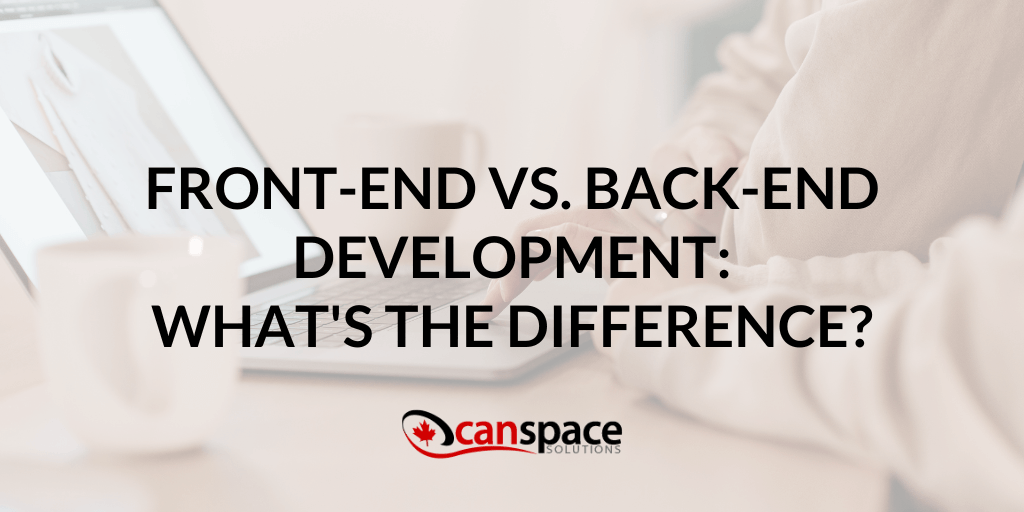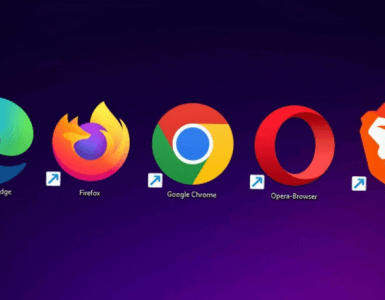- Front-end development focuses on crafting user interfaces through HTML, CSS, and JavaScript, ensuring an engaging and responsive user experience.
- Back-end development operates behind the scenes, managing server-side operations, databases, and logic to empower dynamic functionality.
- APIs act as bridges between front-end and back-end development, while full-stack developers are adept at both technologies, allowing them to navigate the entire development process.
Front-end and back-end development are important components of a website or web application. Though they both work together to create a seamless experience, they involve different skill sets and technologies.
Continue reading as we explore the basics of front-end and back-end development and discuss the key differences between the two.
Front-End Development: Shaping User Experiences
Front-end development revolves around what users directly interact with—a website’s visual and interactive elements. Here, the developers are similar to architects and designers, meticulously crafting the user interface to ensure a seamless and engaging experience.
Languages and Technologies
Front-end developers primarily work with HTML, CSS, and JavaScript. HTML structures the content, CSS styles the layout, and JavaScript adds interactivity. These languages form the foundation for creating captivating web pages.
Responsibilities
- User Interface Design: Front-end developers focus on designing layouts, selecting colour schemes, and ensuring visual consistency to enhance the user experience.
- Responsiveness: They make websites adaptive, ensuring a smooth transition across different devices and screen sizes.
- Interactivity: Through JavaScript, developers add functionality such as form validation, animations, and dynamic content updates.

Tools
Various frameworks and libraries like React, Angular, and Vue.js aid front-end developers in streamlining the development process and building more sophisticated user interfaces.
Back-End Development: Empowering Functionality and Data Handling
Back-end development is the engine room of a website, dealing with server-side operations, databases, and the logic that enables dynamic functionality. It focuses on the behind-the-scenes processes that make user interactions meaningful.
Languages and Technologies
Back-end developers use languages such as Python, Ruby, PHP, Java, and others. These languages power the server and handle complex operations.
Responsibilities
- Server Management: These developers manage servers, ensuring they respond efficiently to user requests and deliver the necessary data.
- Database Integration: They design and maintain databases, handling the storage, retrieval, and manipulation of data.
- Application Logic: Back-end developers create algorithms and business logic, determining how the application functions behind the scenes.
Tools
Frameworks like Django (Python), Ruby on Rails (Ruby), and Express.js (JavaScript) assist back-end developers in building scalable and efficient applications.
Collaboration: Bridging Front-End and Back-End
While front-end and back-end development focus on different aspects, their collaboration is essential for a cohesive and functional website. APIs (Application Programming Interfaces) act as bridges, allowing communication between the two and ensuring seamless data exchange and functionality.
Full-Stack Development: Bridging Both Worlds
Full-Stack Developers are adept at both front-end and back-end technologies. They possess a comprehensive skill set, allowing them to navigate the entire development process—from designing user interfaces to implementing complex server-side logic.
Final Thoughts
Front-end and back-end development are complementary halves, each contributing to the creation of a fully functional and aesthetically pleasing website. Front-end developers focus on the user interface, while Back-End developers empower the site with dynamic functionality and data management. Together, they form a symbiotic relationship that brings websites to life.
It’s important to choose a web hosting provider that is developer-friendly, meaning the servers are specifically set up to support the latest technologies developers need, like Git, Node.js and Ruby, to build modern websites of any complexity. CanSpace Solutions specifically provides support for these, ensuring that anyone can have a great performing website. Contact us for any additional development related questions.










